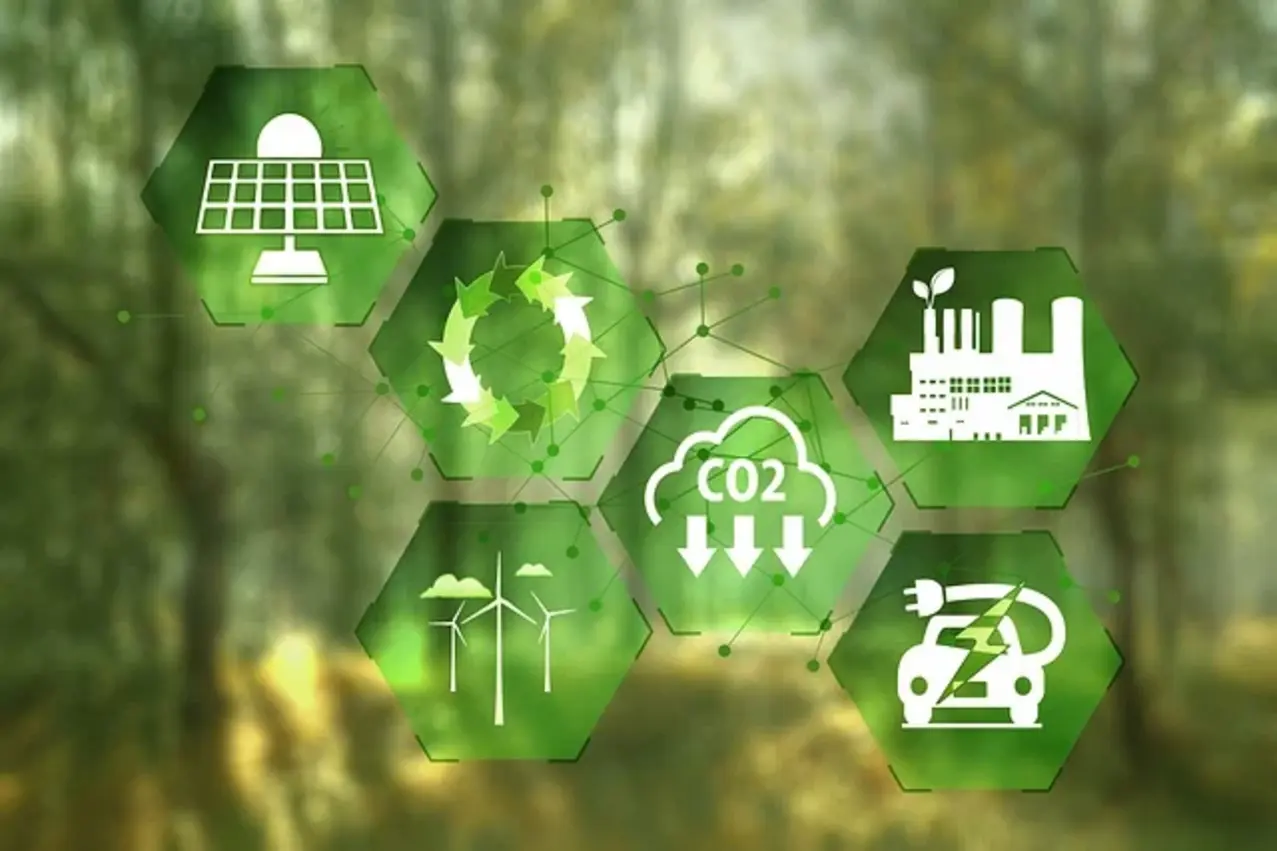|
Getting your Trinity Audio player ready...
|
LONDON, Nov 18 (Reuters) — After nearly five years of pushing an ambitious agenda to transform into low-carbon energy players, BP and other European oil giants, including Shell and Equinor, are recalibrating their strategies. Amid rising energy prices and increasing market volatility, these companies are scaling back their investments in renewable energy, carbon capture, and clean technologies, signaling a shift back toward oil and gas. This change comes even as competitors and industry leaders continue to pour billions into ESG initiatives, carbon capture projects, and large-scale solar and wind energy projects.
BP, once at the forefront of the energy transition, has reversed course, focusing once again on its oil and gas operations. Under CEO Murray Auchincloss, BP plans to allocate billions to new oil and gas developments, particularly in the U.S. Gulf Coast and the Middle East, in an effort to boost performance and revitalize its share price. As part of its strategic retreat, BP has scaled back on renewables, halting 18 early-stage hydrogen projects, cutting its wind and solar operations, and reducing its hydrogen team by more than half.
Meanwhile, Shell and Equinor have also adjusted their energy transition plans, abandoning or scaling down several renewable projects. Shell has focused on improving its profitability by scaling back offshore wind and hydrogen initiatives, weakening its 2030 carbon reduction targets, and exiting certain renewable markets, such as offshore wind in Europe. Similarly, Equinor has launched an internal review of its low-carbon business, scrapping several early-stage projects while placing greater emphasis on mature offshore wind projects.
ESG, Carbon Capture, and Renewables: A Growing Contrast
While BP, Shell, and Equinor move to curb their green ambitions, other companies and sectors are doubling down on their investments in carbon capture, renewables, and sustainable technologies in sharp contrast to these retrenchments. Notably, TotalEnergies, France’s energy giant, has remained committed to expanding its renewable energy capacity, outpacing its competitors in the clean energy transition. TotalEnergies continues to invest billions in solar, wind, and hydrogen projects and is on track to meet its ambitious net-zero emissions goals by 2050.
Major Investments in Carbon Capture and Clean Energy
- ExxonMobil: Despite its U.S. rivals largely focusing on traditional fossil fuels, ExxonMobil has made significant strides in carbon capture. The company has announced a $15 billion investment in carbon capture and storage (CCS) projects globally, including a multi-billion-dollar carbon capture hub in Houston, Texas, aiming to capture and store over 100 million metric tons of CO₂ annually by 2040. Exxon’s CCS investments are seen as crucial for its efforts to meet long-term sustainability goals and address climate concerns.
- Equinor’s Offshore Wind Projects: While Equinor has paused some early-stage projects, it continues to lead the industry in developing advanced offshore wind projects. The company recently secured a contract for a massive offshore wind farm off the coast of New York, one of the largest of its kind in the U.S., demonstrating a long-term commitment to renewable energy. Equinor is also working on innovative projects in floating wind technology, aiming to revolutionize the offshore wind sector.
- Shell’s Renewable Energy Divestment & Carbon Capture Plans: While Shell has dialed back its offshore wind investments, it remains committed to carbon capture and hydrogen technologies. The company is building one of the world’s largest carbon capture and storage (CCS) facilities in the North Sea, capable of capturing and storing up to 10 million tons of CO₂ per year. Additionally, Shell’s hydrogen investments have continued, particularly in blue hydrogen, which uses natural gas to produce hydrogen while capturing the CO₂ emissions.
- Vestas Wind Systems: One of the world’s largest manufacturers of wind turbines, Vestas has seen consistent growth in demand for its products, particularly in offshore wind projects. The company recently signed a $4.2 billion deal to supply turbines for a major offshore wind project in the U.K. North Sea, showing the continued expansion of wind power capacity, even as major oil companies cut back.
- Ørsted: Denmark’s Ørsted has been an industry leader in renewable energy development, particularly in offshore wind. Ørsted is investing $27 billion in renewable projects between now and 2025 and has announced plans to expand its offshore wind capacity significantly over the next decade. The company is also developing green hydrogen and biomass projects as part of its diversification strategy.
Rising Demand for Solar and Green Hydrogen
In addition to wind and carbon capture, solar energy and green hydrogen are witnessing substantial growth. Solar companies like First Solar and Enphase Energy are capitalizing on global demand for clean energy. First Solar, in particular, has announced a new $1.5 billion solar panel manufacturing plant in the U.S., expanding its production capacity as part of the growing U.S. commitment to solar power.
Green hydrogen, which is produced through the electrolysis of water powered by renewable energy, has also become a key focus. Spain’s Iberdrola and Germany’s Siemens Energy are investing heavily in green hydrogen infrastructure, with plans to scale up electrolyzer capacity and develop large-scale hydrogen production hubs across Europe and the U.S.
A Shifting Landscape: Balancing Profit and Sustainability
The divergence in strategies between traditional oil majors and companies investing heavily in renewable energy underscores the tension in the energy transition. While BP, Shell, and Equinor recalibrate their business models in response to the energy crisis and rising costs in renewables, companies like TotalEnergies, ExxonMobil, and a host of renewable energy firms are leaning into the future of energy.
As Rohan Bowater, an analyst at Accela Research, notes: “To make transition plans stick, companies need the right incentives for management, a clear mandate from shareholders, and a focus on demonstrating value.” While BP, Shell, and Equinor grapple with balancing long-term sustainability goals with short-term returns, other firms are capitalizing on the growing demand for clean energy, positioning themselves for long-term profitability in a low-carbon economy.
Conclusion: Striking the Right Balance
The recent moves by BP, Shell, and Equinor to scale back their low-carbon ambitions reflect market realities and the energy crisis stemming from geopolitical events such as the Russian invasion of Ukraine. However, their retreat contrasts sharply with the ongoing growth of carbon capture, renewables, and green hydrogen investments made by companies like TotalEnergies, ExxonMobil, Ørsted, and others. The increasing investments in wind, solar, and CCS projects highlight the growing commitment to the energy transition, even as some of the industry’s largest players reassess their approach.
While the future of fossil fuels remains uncertain, the world’s energy giants must navigate the delicate balance between short-term profits and long-term sustainability. The companies that successfully position themselves in the growing renewable and clean energy sectors will likely emerge as the leaders of the next generation of energy companies.
References:
- Reuters, “BP and Rivals Scale Back Renewable Energy Plans Amid Market Turmoil,” November 18, 2024.
- ExxonMobil, “ExxonMobil Announces $15 Billion Investment in Carbon Capture Projects,” October 2024.
- Ørsted, “Ørsted to Invest $27 Billion in Renewable Energy Projects by 2025,” November 2024.
- Financial Times, “Energy Majors Scale Back on Renewables Amid Market Volatility,” October 2024.
- Siemens Energy, “Siemens Energy Joins Efforts to Expand Green Hydrogen Production,” September 2024.

